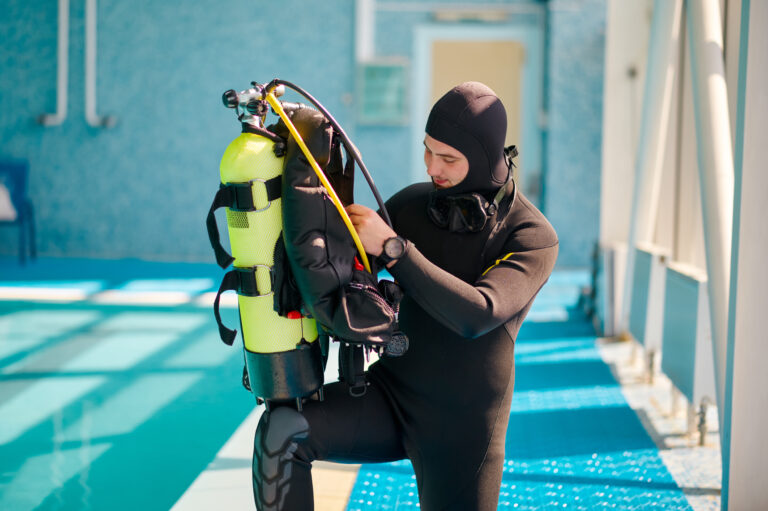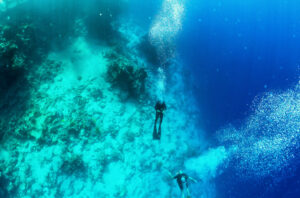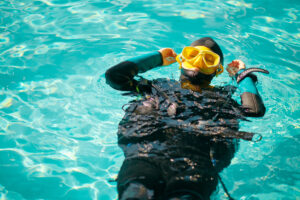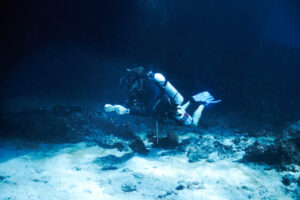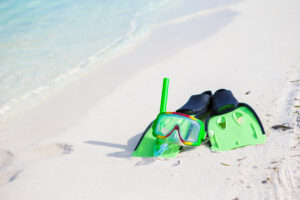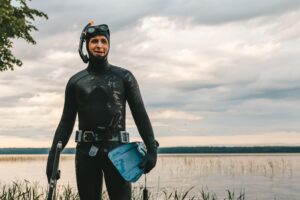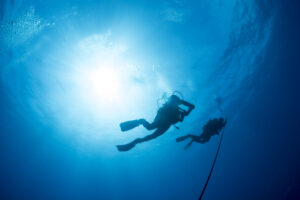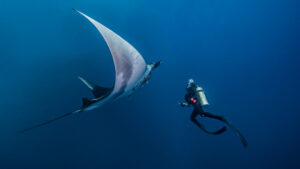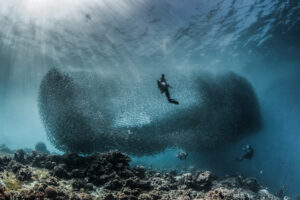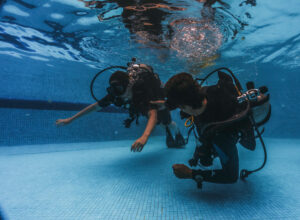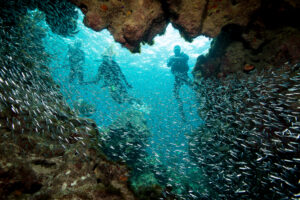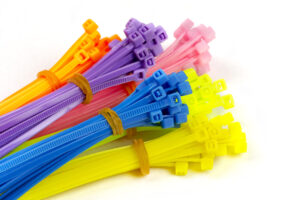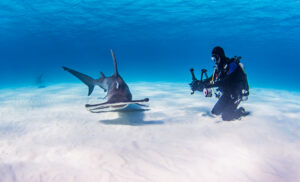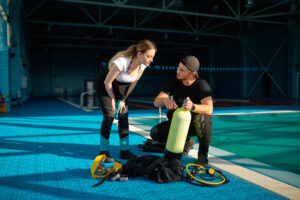What is Surface Consumption Rate (SCR)?
The Surface Consumption Rate (SCR) is a critical concept in scuba diving that quantifies a diver’s gas usage under standardized surface conditions. This value is measured in units such as pounds per square inch (psi), bars, or cubic feet per minute (CFM). SCR is an essential metric for calculating a diver’s air consumption at different depths and plays a significant role in dive planning. Having an accurate understanding of one’s SCR is key for determining the duration of a dive, ensuring a safe and well-managed air supply throughout the dive.
Calculation of SCR
The calculation of SCR is typically done during a controlled, steady swim at the water’s surface, without any impact from depth, exertion, or adjustments in buoyancy. A diver begins by noting the starting and ending pressure in their tank and tracking the duration of the dive. The difference in the tank pressure reflects the total amount of gas consumed during the dive. To calculate SCR, the diver divides the total gas consumption by the time spent on the dive, yielding a rate of air consumption over time.
SCR is commonly expressed in psi per minute or bars per minute, depending on the system used. To make this value applicable to dives conducted at different depths, the SCR is often converted to cubic feet per minute (CFM), using gas volume laws to account for varying pressures at depth. This ensures that the SCR can be adjusted to calculate air consumption accurately during a dive, no matter the depth.
Although calculating SCR on the surface is straightforward, it becomes a versatile tool when planning dives for different depths. Divers use this base measurement to understand how their air consumption will change as pressure increases underwater, allowing for effective dive management.
Factors Influencing SCR
Many factors influence a diver’s SCR, making it essential to revisit and recalculate the rate regularly. One key factor is the diver’s fitness level, which can affect both breathing rate and overall gas consumption. A diver in better physical shape generally consumes air more efficiently, while a less fit diver may have a higher SCR due to increased exertion.
Stress is another significant factor. Anxiety or fear while diving can cause shallow or rapid breathing, which leads to increased air consumption. Experienced divers often have lower SCRs as they tend to stay calm underwater and maintain a steady breathing pattern. Comfort and experience in the water also play a crucial role; divers who feel more at ease tend to have lower gas consumption rates.
Environmental conditions such as water temperature can impact SCR as well. In cold water, the body works harder to maintain its core temperature, increasing the rate of air consumption. Similarly, a dive in rough waters or strong currents requires more effort to swim, leading to a higher SCR. The equipment a diver uses, including the resistance to airflow of their regulator, can also influence the work of breathing and therefore affect SCR. These factors underscore the need for divers to reassess their SCR regularly for different dives.
SCR in Dive Planning
Once a diver knows their SCR, it becomes a fundamental part of dive planning, particularly in calculating the available bottom time at various depths. To apply SCR at depth, divers use the concept of atmospheres. As depth increases, the pressure on the diver also rises. Every 10 meters (33 feet) of seawater adds one atmosphere of pressure. To adjust the SCR for depth, it is multiplied by the number of atmospheres at the desired depth. This adjusted rate is known as the Depth Consumption Rate (DCR), which allows divers to predict how long their air will last while diving.
For example, if a diver has an SCR of 0.5 CFM at the surface and plans to dive to a depth of 20 meters (65.6 feet), the pressure at that depth is three atmospheres (one for the surface plus two additional atmospheres). The diver’s DCR would then be 1.5 CFM (0.5 CFM multiplied by three atmospheres). Using this DCR, divers can accurately calculate the amount of air they will consume at a given depth and plan their dive times accordingly.
Effective dive planning using SCR ensures that divers carry enough air for the entire duration of the dive, including a safety margin for emergencies. It also allows for precise management of dive profiles, reducing the risk of running out of air underwater and increasing overall safety.
Importance of SCR in Safety
Proper calculation and understanding of SCR are essential for maintaining safety during a dive. A diver who miscalculates their SCR may run out of air prematurely, leading to potentially dangerous situations underwater. By accurately determining their SCR and adjusting it for depth, divers can ensure that they have enough air for the entire dive and for any unexpected circumstances that may arise.
Diving emergencies often occur when air supply is misjudged or consumed faster than anticipated. Knowing one’s SCR allows divers to plan for contingencies and reserve enough air for emergency ascents or extended underwater time if necessary. Additionally, divers can use their SCR to ensure they are using the right equipment and air supply for the dive, further enhancing safety.
For divers who dive in varying conditions, such as colder waters or currents, recalculating SCR based on the environmental and physical demands of the dive ensures a more accurate prediction of air consumption. Overall, mastering SCR is an important step toward becoming a safer and more responsible diver.
Techniques to Reduce SCR
Reducing SCR is a goal for many divers, as it extends the available time underwater and improves efficiency. One effective method for lowering SCR is maintaining good physical fitness. A physically fit diver will have a lower resting heart rate and breathe more efficiently, both of which contribute to reduced air consumption. Additionally, divers who regularly practice diving often develop better buoyancy control and more efficient swimming techniques, which can further lower their SCR.
Buoyancy control plays a particularly important role in reducing air consumption. A diver who maintains neutral buoyancy exerts less effort to stay level in the water, reducing the need for constant finning or adjusting position. Efficient swimming techniques, such as using a streamlined body position and minimizing unnecessary movements, also help reduce energy expenditure and, consequently, air consumption.
Regular equipment maintenance is another key factor in reducing SCR. A well-maintained regulator ensures that airflow remains unobstructed, minimizing the work of breathing. Divers should regularly check their equipment to ensure it is functioning optimally and not adding to the effort of drawing breath underwater. By employing these techniques, divers can reduce their SCR and enjoy longer and more efficient dives.
Advanced Uses of SCR
While SCR is primarily used for basic dive planning, it also has applications in advanced diving practices such as technical diving. Technical divers often undertake complex dives that involve decompression stops, multiple gas mixes, or long durations underwater. In these scenarios, an understanding of SCR is crucial for calculating gas needs, planning decompression schedules, and managing air supply effectively.
In technical diving, where multiple gas mixtures are used, the SCR can vary depending on the gas being breathed. For example, helium-based gases, commonly used in deep dives, have different densities and work of breathing than regular air. Technical divers use their SCR to determine how much of each gas mixture they will need for a given dive, taking into account the changes in work of breathing at different depths.
Rebreathers, which are advanced diving devices that recycle exhaled gas, also require a solid understanding of SCR. These devices reduce the amount of gas used by removing carbon dioxide from exhaled air and reintroducing oxygen. Divers using rebreathers rely on precise calculations of SCR to manage the rebreather’s gas supply and ensure they maintain safe oxygen and carbon dioxide levels throughout the dive.
SCR and Equipment Considerations
Diving equipment plays a significant role in determining SCR. The type of regulator a diver uses can affect the ease of breathing, with high-performance regulators designed to deliver air more efficiently. A well-designed regulator can reduce the work of breathing, thus potentially lowering the diver’s SCR. Conversely, a poorly maintained or low-quality regulator may require more effort to inhale, increasing air consumption.
Tank size is another important consideration, though it does not directly affect the SCR. A larger tank provides more air, which can extend the dive duration, but the rate at which a diver consumes that air (SCR) remains unchanged. Divers must balance the size and weight of their tank with their expected SCR and dive duration, ensuring they have enough air for the planned dive and any potential emergencies.
Other equipment, such as wetsuits, buoyancy compensators, and fins, can also impact SCR by influencing the diver’s efficiency and effort in the water. For example, a wetsuit that provides inadequate insulation in cold water could increase the diver’s SCR by causing the body to work harder to maintain heat. Similarly, poorly fitting fins or buoyancy compensators can make swimming more laborious, increasing exertion and air consumption.
SCR and Environmental Factors
Environmental conditions can significantly affect a diver’s SCR. Cold water diving, for example, often leads to an increase in SCR because the body uses more energy to stay warm. The increased metabolic rate and shivering in colder temperatures result in faster breathing and higher air consumption. Divers planning to dive in colder environments must account for these changes and bring extra air supply if necessary.
Diving in strong currents or rough seas can also increase air consumption. In such conditions, a diver may have to swim harder to maintain position, increasing physical exertion and, consequently, their SCR. Even seemingly calm conditions can present challenges, such as surge in shallow waters, which can make maintaining buoyancy and position more difficult, increasing the SCR.
Altitude diving, which takes place in high-altitude lakes or other bodies of water above sea level, introduces another variable. At higher altitudes, the pressure is lower, and gas consumption rates can differ from sea-level calculations. Divers in these environments must make specific adjustments to their dive plans to account for the difference in atmospheric pressure and its effect on SCR.
The Role of SCR in Scuba Diving Training
SCR is an essential part of scuba diving training. Early in their education, divers are introduced to the concept of SCR, as it forms the foundation for safe and effective dive planning. As they progress, divers learn how to calculate their SCR, adjust it for different depths, and use it to plan their dives. They are also taught techniques to manage and reduce their SCR, improving efficiency and safety underwater.
Experienced divers continue to monitor and adjust their SCR over time, taking into account changes in their fitness level, equipment, and dive conditions. Instructors often emphasize the importance of recalculating SCR regularly, especially after long breaks from diving or when switching to new gear. Mastering SCR is a critical aspect of becoming a proficient and safe diver, and it remains an ongoing focus throughout a diver’s development.
SCR in Different Types of Diving
While SCR is a fundamental concept in recreational scuba diving, its application can vary significantly across different types of diving. For technical divers, SCR plays a critical role in managing gas mixes and decompression schedules during complex dives. In these situations, divers may need to calculate SCR for multiple gas mixtures, each with its own impact on breathing effort and air consumption.
Cave and wreck divers, who navigate confined spaces or face strong currents, often experience higher SCRs due to increased physical exertion. These divers must be particularly mindful of their air consumption and adjust their SCR calculations based on the challenging conditions they face. For these advanced forms of diving, understanding and managing SCR is essential to completing dives safely and efficiently.
Key Takeaways
The Surface Consumption Rate (SCR) is a crucial concept in scuba diving, helping divers manage air supply and plan dives effectively. By understanding and calculating SCR, divers can ensure safe dive practices, extend their underwater time, and better navigate advanced diving environments. Mastery of SCR contributes to a safer, more efficient diving experience, whether for recreational or technical diving.

